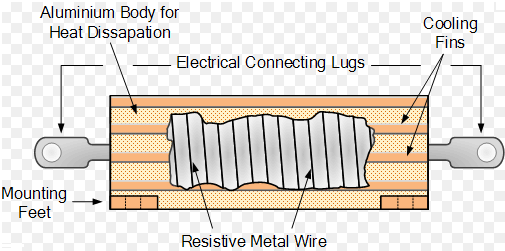Position:Home » Technical Articles
What Affect Resistors' Resistance?
Writer:Microhm Page View:Date:2019-06-27
A resistor is a little package of resistance: wire it into a circuit and you reduce the current by a precise amount. Take metal film resistor for instance, It is a short, worm-like component with colored stripes on the side. It has two connections, one on either side, so you can hook it into a circuit.
What's going on inside a resistor? If you break one open, and scratch off the outer coating of insulating paint, you might see an insulating ceramic rod running through the middle with copper wire wrapped around the outside. A resistor like this is described as wire-wound.

The number of copper turns controls the resistance very precisely: the more copper turns, and the thinner the copper, the higher the resistance. In smaller-value resistors, designed for lower-power circuits, the copper winding is replaced by a spiral pattern of carbon. Resistors like this are much cheaper to make and are called carbon-film. Generally, wire-wound resistors are more precise and more stable at higher operating temperatures.
How does the size of a resistor affect its resistance? The length, cross-sectional area, and stuff inside affect resistors' resistance. If you make a wire thinner or longer, it's harder for electrons to wiggle through it. And, as we've already seen, it's harder for electricity to flow through some materials (insulators) than others (conductors).

Although Georg Ohm is best known for relating voltage, current, and resistance, he also researched the relationship between resistance and the size and type of material from which a resistor is made. That led him to another important equation: R = ρ × L / S.
In simple words, the resistance (R) of a material increases as its length increases (so longer wires offer more resistance) and increases as its area decreases (thinner wires offer more resistance). The resistance is also related to the type of material from which a resistor is made.
Latest News
- Resistor's role in measuring and correcting LED,,,
- Single through-hole resistors' characteristics ,,,
- Why shunt resistors for current sense applicati,,,
- Metal-film resistors with small size, high resi,,,
- 36W High-Current Shunt Resistors MMS8420,,,
- 1W Surface Mount Resistor MPR1206,,,
- An Overview of Microhm Electronics' Resistor Pr,,,
- More anti-sulfur resistors used in harsh envir,,,
- Resistance changes with temperature,,,
- 140W TO247 High Power Heatsinkable Resistor,,,
- MMS5930 is ideal for current sensing in industr,,,
- Shunt resistors selection for engineers' design,,,
- Considerations for choosing precision resistors,,,
- Ceramic Encased Cement Resistors NWH Series for,,,
- Resistors for Passive Balancing in Battery-Pow,,,
Hot Articles
- Microhm will take part in 10th Automotive World,,,
- Thanks for Visiting Microhm's Booth E5-5706 in ,,,
- Resistors in Short Supply: Blame Cars,,,
- New lunch: High Power Precision Shunt Resistor,,,,
- How to Test a Resistor,,,
- Innovative Technology, Future Electric: Electri,,,
- What is Precision Resistors?,,,
- SMD Resistors Sizes and Packages,,,
- The Construction and Features of Metal Film Res,,,
- What is a TO-220 Resisor?,,,
- Hot Selling Products: Precision Shunt Resistors,,,
- How to Calculate the Equivalent Resistance Valu,,,
- What is a Fixed Resistor?,,,
- Resistors in LED Circuits,,,
- Resistors Types and Materials Overview,,,
Resistance applications
- Heater Blower Motor Resistor in Air Conditioner,,,
- Urbanization Development Bringing the Transform,,,
- Shunt Resistor MMS8420 for High Current Stable ,,,
- The Four Important Functions of Alloy Resistors,,,
- Why Zero-Ohm Resistors?,,,
- Surface Mount Resistor's Size and Package ,,,
- The Main Application for High Precision and Low,,,
- Select the Right Resistor for Harmonic Filterin,,,
- BMS for New Energy Vehicle,,,
- Carbon Film Resistors' Features and Application,,,
- Miniature future for passive electronic compone,,,
- The Measurement Accuracy of Automotive Shunt is,,,
- Industrial Roberts Applied to Solar Photovoltai,,,
- Difference Between High Precision Resistors and,,,
- Precision Resistors' Construction and TCR,,,
